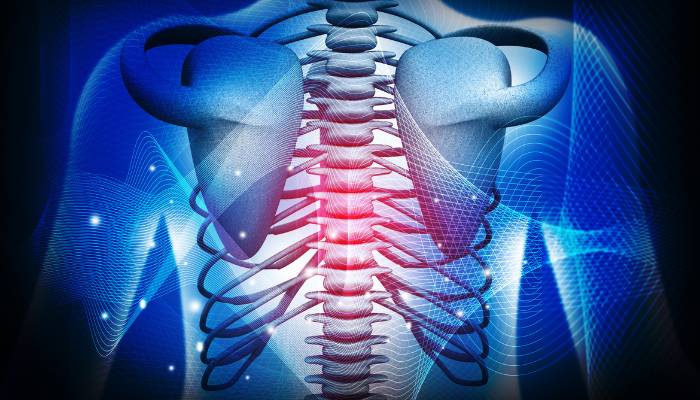Flared ribs refer to a condition in which the ribcage sticks out abnormally, causing discomfort and pain. This can be caused by several factors such as poor posture, injury, or disease. Fixing misaligned is important as it can alleviate pain and improve overall body alignment and posture. If you wonder how long does it take to fix flared ribs? In this article, we will discuss the factors affecting the healing time for flared ribs, the average healing time, and the various treatment options available. We will provide tips for speeding up the healing process and achieving a successful recovery.

Flared ribs causes
Flared ribs can be caused by several factors. The main factors of the condition are :
- Poor posture: Maintaining a poor posture for prolonged periods of time can cause the ribcage to flare out and result in discomfort and pain.
- Injury: Direct blows to the ribcage or falls can cause the ribs to flare out, leading to discomfort and pain.
- Disease: Certain medical conditions, such as scoliosis, can cause the ribcage to flare out.
- Overuse of muscles: Overuse of certain muscles, especially the chest and upper back muscles, can cause the ribcage to flare out.
Importance of fixing flared ribs
Fixing flared ribs is important for several reasons:
- Pain relief: Flared ribs can cause discomfort and pain in the ribcage and surrounding areas. Fixing the condition can alleviate this pain and improve quality of life.
- Posture improvement: Poor posture is often a contributing factor to flared ribs. Fixing the condition can improve overall body alignment and posture, reducing the risk of future injuries.
- Preventing further complications: Left untreated, flared ribs can lead to further complications such as chronic pain, muscle imbalances, and reduced physical function.
- Enhancing athletic performance: Athletes who have flared ribs may experience reduced performance and increased risk of injury. Fixing the condition can enhance athletic performance and reduce the risk of future injuries.
Factors affecting the healing time
There are several factors that can affect time length to fix flared ribs, including:
- Severity of the injury: The severity of the injury will greatly impact the healing time. Mild cases may take 6-12 weeks to heal, while moderate to severe cases may take 12-20 weeks or more.
- Age and overall health of the patient: Older individuals and those with pre-existing medical conditions may have a slower healing time.
- Treatment approach: The type of treatment chosen (conservative or surgical) will also impact the healing time.
- Compliance with physical therapy and rehabilitation exercises: Consistent and proper adherence to a physical therapy and rehabilitation program can greatly impact the healing time.
Average Healing Time
The average healing time for flared ribs can vary depending on the severity of the injury and other factors discussed above. Generally, the following time frames can be used as a rough estimate:
- Mild cases: 6-12 weeks
- Moderate cases: 12-16 weeks
- Severe cases: 16-20 weeks or more
It is important to note that these are rough estimates and the actual healing time may vary for each individual.
Treatment Options
The two basic treatment options for flared ribs include:
- Conservative approach: This approach typically involves rest, physical therapy, and medication. Physical therapy may include exercises to improve posture, strengthen the muscles supporting the ribcage, and alleviate pain. Medications, such as nonsteroidal anti-inflammatory drugs (NSAIDs), may also be prescribed to relieve pain and reduce inflammation.
- Surgical intervention: In severe cases, surgery may be necessary to correct the condition. This may involve repositioning the ribcage or fusing together certain ribs. Surgical intervention is typically only recommended as a last resort after conservative measures have failed.
Tips for speeding up the healing process
There are several tips that can help speed up the healing process for flared ribs, including:
- Adhere to physical therapy and rehabilitation exercises: Consistent and proper adherence to a physical therapy and rehabilitation program is crucial for a successful recovery.
- Practice good posture: Maintaining good posture can help reduce the risk of future injuries and improve the healing process.
- Avoid activities that put stress on the ribcage: Avoid activities that put stress on the ribcage, such as heavy lifting and high-impact sports, until the condition has improved.
- Manage pain with over-the-counter pain relievers: Over-the-counter pain relievers, such as acetaminophen and ibuprofen, can be used to manage pain and reduce inflammation.
- Apply heat or ice to the affected area: Applying heat or ice to the affected area can help alleviate pain and reduce swelling.
- Get plenty of rest: Getting plenty of rest can help reduce stress on the ribcage and promote healing.
These tips can be used in conjunction with the recommended treatment plan to speed up the healing process and achieve a successful recovery.
Conclusion
So, while searching span of time to fix flared ribs, we need to understand all the aspects. The average healing time for flared ribs varies depending on the severity of the injury and other factors. Treatment options for flared ribs include a conservative approach, such as physical therapy and medication, or surgical intervention in severe cases. Adhering to physical therapy and rehabilitation exercises, practicing good posture, managing pain, and getting plenty of rest are all ways to help speed up the healing process. It is important to work closely with a healthcare provider to determine the best course of treatment and to monitor progress during the healing process. In fact, an early diagnosis and proper treatment are essential for a successful outcome and to prevent further complications.

Lifebing is driven by an unrelenting passion for promoting health and well-being, our team is wholly committed to curating exceptional content and immersive experiences.
